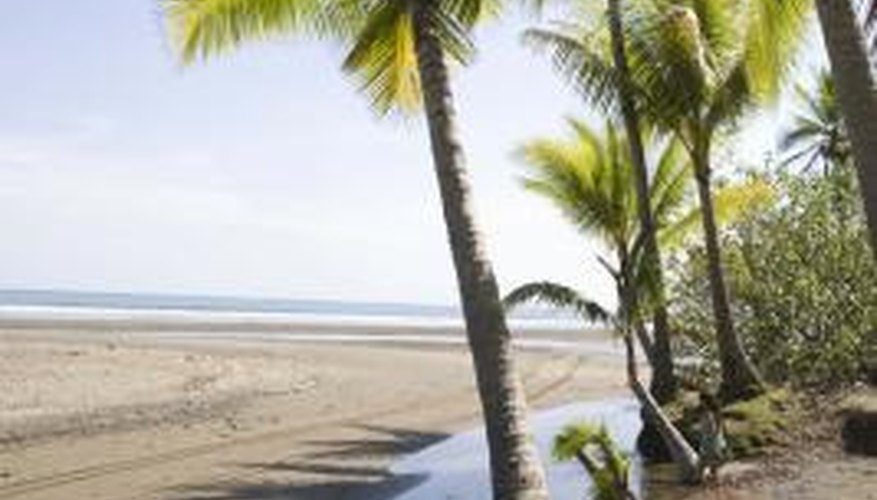The palm tree, icon of tropical regions and Rodeo Drive in Beverly Hills, is not unlike other evergreens: it must adapt to survive. The thousands of palm tree species (Arecaceae or Palmae) thrive in a broad range of environments, including savannahs, rainforests and deserts.
Leaves
Wind and rain easily pass through and cool the individual fan-shaped (palmate) or feather-shaped (pinnate) leaves of palm trees. A cooler palm tree does not lose much water, making palm trees more heat- and drought-resistant. Another unique adaptation of palm tree leaves is their shading ability. For example, the California fan palm's leaves shade the trunk, so less water evaporates.
- Wind and rain easily pass through and cool the individual fan-shaped (palmate) or feather-shaped (pinnate) leaves of palm trees.
- A cooler palm tree does not lose much water, making palm trees more heat- and drought-resistant.
Trunk
Palm trees have tall trunks for getting access to air and sun above other trees. Another property of palm tree trunks is the ability to store nutrients the palm needs for periods of drought or when the palm needs to grow. In particular, palm trees store starch in their trunks to help their leaves grow.
Roots
Palm trees have large root balls to stabilise them in the wind. From the root balls, lots of small, soft roots branch out. Many of these are near the surface of the ground to soak up moisture. Some of the small roots also spread out and down to collect water deeper in the ground. This characteristic helps palm trees withstand drought.
- Palm trees have large root balls to stabilise them in the wind.
- Some of the small roots also spread out and down to collect water deeper in the ground.
Spines and Poison
Palm trees have adaptations for protection against foraging animals, including spines and even poison. Some species have spines on their leaves and trunks. Palm spines can be painful to the touch, break off underneath the skin, and can cause swelling with an infection. Species of palms especially noted for their spines at various places on the tree include Macaw, Grugru, needle and date palms.
- Palm trees have adaptations for protection against foraging animals, including spines and even poison.
Rapid Growth
Palm trees take advantage of a lot of moisture by growing quickly. The adaptation has several advantages, including protecting the trees from destruction by wildlife. This characteristic originally protected palm trees from being eaten by dinosaurs. The leaves of palm trees mature and get hard fast, making the leaves less appealing to eat.
- Palm trees take advantage of a lot of moisture by growing quickly.
- The adaptation has several advantages, including protecting the trees from destruction by wildlife.
